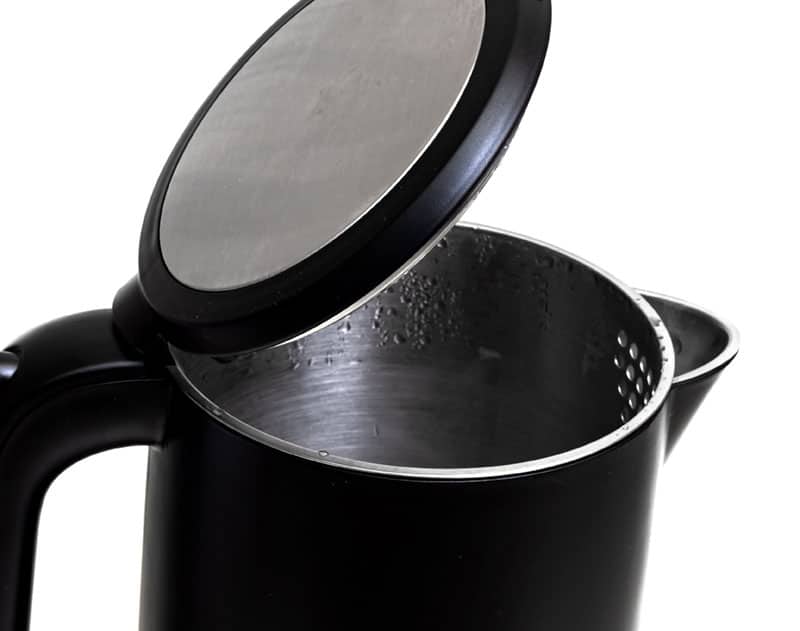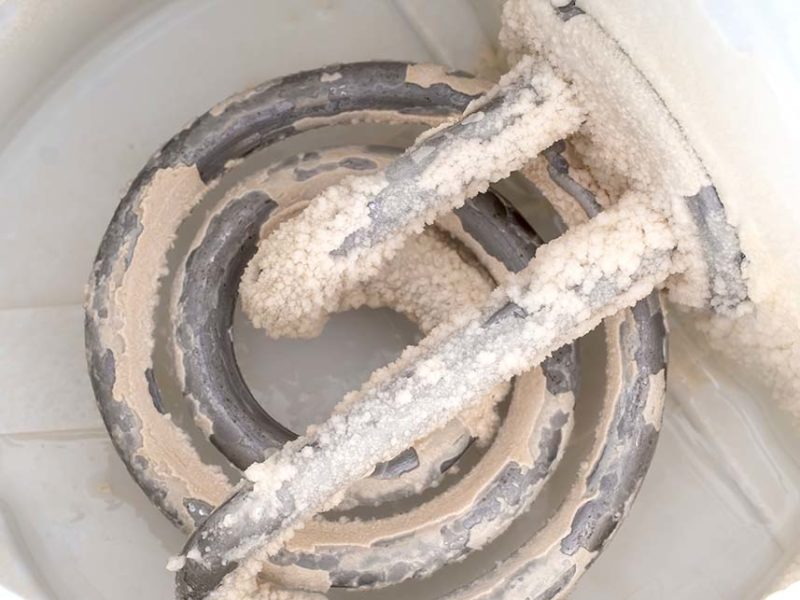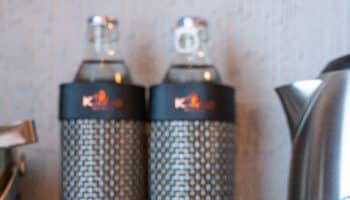Is your kettle not turning off?
I know how annoying and inconvenient it can be when your kettle won’t stop boiling, especially when you’re concerned about your electric bill.
But don’t worry; I’m here to help!
If your kettle won’t switch off after boiling, ensure the lid is closed properly, descale the kettle and lid, and avoid overfilling. If the issue persists, consider replacing the thermostat or your kettle.
Read on to learn how to fix a kettle that won’t switch off!
Kettle Won’t Stop Boiling? Try These 4 Fixes
Different reasons can explain why your kettle won’t switch off after boiling. Luckily, there are four simple solutions you can try to get it working again.
#1 Close the Lid Properly
When I see an electric kettle not turning off, I always ensure the lid is properly closed.
You see, if the lid is not closed tightly, it will take longer for the water to reach the boiling point. If the thermostat inside the kettle struggles to reach boiling, it will not trigger the automatic shut-off feature.
To solve the problem, make sure that you have closed the lid properly. Click it shut when boiling the kettle.
#2 Do Not Overfill Your Kettle
If your kettle keeps boiling and won’t switch off, ensure you don’t overfill it.
Water entering the steam tube can stop the kettle from switching off as it should.
There’s a maximum line on the inside or outside of your kettle. I recommend not filling your kettle above the max line to avoid malfunctions.
If you accidentally overfill your kettle, follow these instructions:
- Unplug your kettle.
- Open the lid and empty the water from the kettle.
- Dry the inside of the kettle the best you can with a towel
- Leave the kettle to dry for 24 hours with the lid open. After 24 hours, the kettle should work normally again.

#3 Descale the Kettle and Lid
Limescale buildup can also explain why your kettle won’t stop boiling.
From what I’ve seen, limescale can affect your kettle’s operation and cause it not to turn off. For instance, if the lid has limescale, it won’t be able to close well, and the kettle will boil more than it needs to because it will take a lot longer for the water to boil.
You should descale your kettle regularly to prevent performance issues and unpleasant smells. But how regular should that be? Look at the following guide (based on the average use of five kettle boils daily).
- If you live in a soft water area, you should descale your kettle once every three months.
- Descale your kettle monthly if you live in a hard water area.
- If you use your kettle more than five times daily, you will need to descale it more frequently.

Here’s how you can remove the limescale from your kettle:
- Half-fill the kettle with equal parts of vinegar and water.
- Put the kettle on to boil. Once the water boils, please turn it off.
- Leave the water to cool inside the kettle.
- Empty the kettle. Use a sponge to scrub away and remove any stubborn patches of limescale.
- Rinse the kettle a couple of times to remove the vinegar smell.
To remove limescale from a kettle lid:
- Soak a cleaning cloth in equal parts water to vinegar.
- Use the cloth to scrub around the lid of the kettle.
- For extra stubborn limescale spots, place the cleaning cloth over the lid and leave it overnight.
- Scrub the kettle lid the following day. The limescale should now have loosened and be easier to remove.
If you don’t want to use vinegar in your kettle, you can use a commercial descaler or citric acid.
#4 Replace the Thermostat
If your kettle won’t switch off after boiling, the thermostat is likely damaged.
You see, electric kettles turn off when prompted by the thermostat. So, if your kettle keeps boiling continuously, the thermostat has likely malfunctioned.
In my experience, the element that is most likely to malfunction in the thermostat is the pin. The thermostat will not work properly if the pin melts.
You can check if the pin in the thermostat has melted by looking at it. To do so, follow these steps:
- Use a screwdriver to unscrew the handle of the kettle. You will likely find the screws linked to the handle under the kettle’s base. But this could vary from model to model, so please check the manufacturer’s manual.
- Look at the thermostat to see if the pin has melted. If it has, you will need to buy a replacement thermostat.
You can find a replacement thermostat online. But remember, the thermostat model you need will vary depending on your kettle type. If you’re struggling to find the right thermostat, replacing the kettle can be easier and more cost-effective.
What Should You Do If Your Kettle Still Won’t Stop Boiling?
If you’ve tried all the fixes above, but your kettle doesn’t turn off and won’t stop boiling, then there’s likely another issue that will require you to tamper with the electrics to fix it.
If your kettle is still under warranty, I recommend that you get in touch with the manufacturer. You should be able to get a replacement. Bear in mind that most kettle warranties last for a maximum of 2 years. It probably won’t be covered if your kettle is older than that.
If your kettle is not under warranty, I advise purchasing a new one, as finding the right replacement parts is often difficult. You should also consider buying a new kettle if yours is over four years old.
Wrapping Up: Fixing a Kettle That Won’t Switch Off After Boiling
Hopefully, now you know how to fix a kettle that won’t switch off after boiling.
Remember to descale your kettle, close the lid, and replace the thermostat to fix the issue. It’s also important to ensure you don’t overfill it with water.
If you found this article helpful, please check out some of our other free guides. You could even sign up to our email list.
Thanks for reading, have a great day!
-Craig








